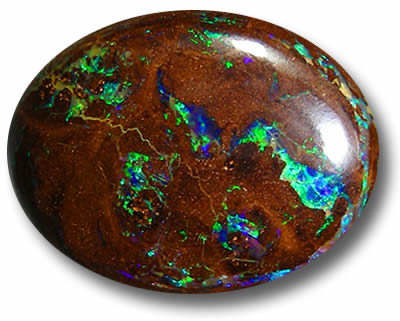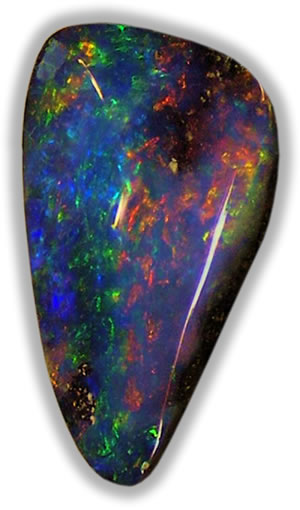Australian Boulder Opal

Introduction
Australian boulder opal stands out as a unique gemstone, known for its striking play of color and distinctive matrix. Primarily sourced from Queensland, this opal develops within ironstone boulders, creating a captivating mix of vibrant opalescence against natural, earthy tones. The patterns and color flashes - from electric blues and greens to warm reds and yellows - ensure each piece is entirely unique.
Discover detailed properties of boulder opal in our boulder opal information guide.
Understanding Opal
Opal is best known for its play of color, a mesmerizing display of rainbow-like hues that shift with light or viewing angle. Not all opals show this feature - only those classified as precious opal do. Among precious opals, the black opal from Australia is highly valued, first found in the 1800s at Lightning Ridge in New South Wales.
Explore comprehensive details on opal gemstones through our general opal information page.
Types of Australian Opal
Australia supplies nearly all the world's opal, but 90% of its output is light-colored opal. Rare black opal makes up just 8% and is prized for its dark body tone, which enhances the vibrancy of the color play compared to common white opals.

The remaining 2% is boulder opal, the second most valued type. This form is distinctive and holds strong appeal in the gem market.
Discovery and Formation of Boulder Opal
First uncovered around 1870 in Quilpie, Western Queensland, boulder opal embeds itself in ironstone boulders. It typically appears as thin veins in these boulders, so cutters often include some of the host ironstone matrix. That's why it's sometimes called opal in matrix.
Characteristics and Cutting
What makes boulder opal particularly interesting? Well, like black opal, its dark body tone boosts the intensity of the color play. Plus, the ironstone adds density, potentially making it more durable. Due to the slender opal veins, cutting domed cabochons is often tricky. Instead, stones are shaped into free-form, irregular pieces to preserve as much opal as possible and avoid waste.
Learn essential tips for maintaining opals in our caring for opals guide.
Market Potential
Boulder opal is relatively new on the scene but shows plenty of promise. The potential mining area spans 200 to 300 kilometers in Western Queensland, and only a fraction has been explored so far - much larger than black opal fields.
Frequently Asked Questions
What is boulder opal?
Boulder opal is a type of precious opal from Australia that forms in ironstone boulders, featuring vibrant color play against a dark matrix.
Where is Australian boulder opal found?
It is primarily found in Queensland, Australia, with discoveries starting in areas like Quilpie.
How does boulder opal differ from black opal?
Both have dark body tones enhancing color vibrancy, but boulder opal includes ironstone matrix and is often cut in irregular shapes due to thin veins.
Is boulder opal durable?
Yes, its ironstone content adds density, which can make it more durable than some other opals.
What colors can boulder opal display?
It shows a range from electric blues and greens to warm reds and yellows, depending on the stone.

